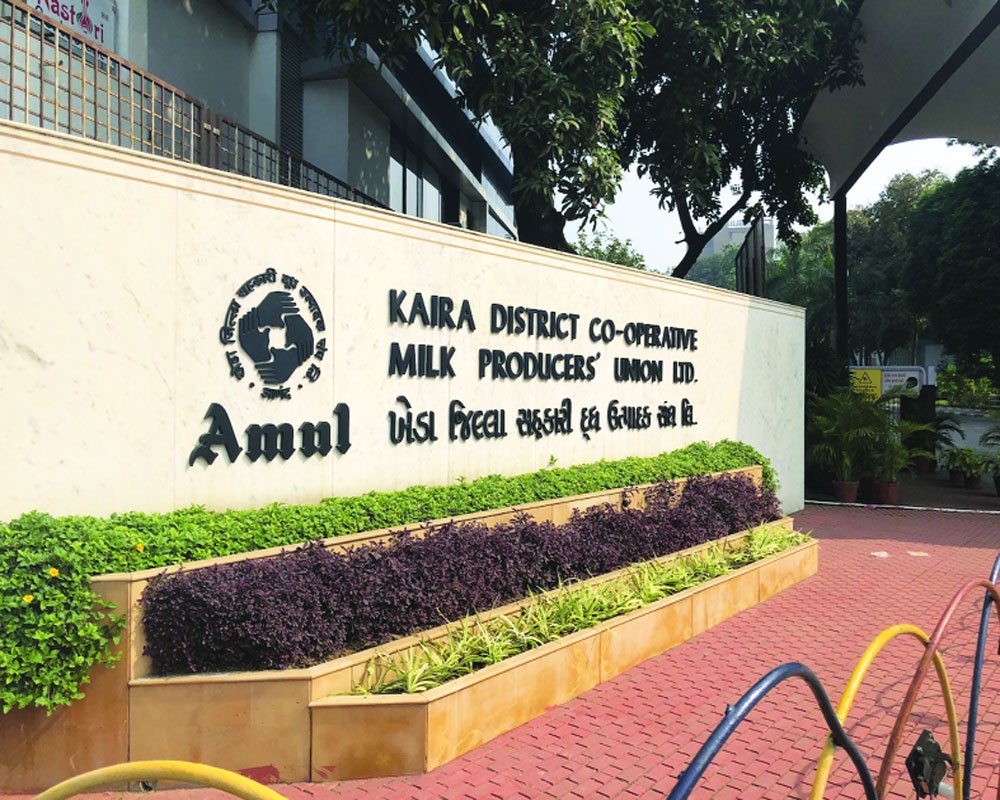Tough times are testing the most resilient of leaders globally. Despite the nation being confronted with serial adversities, Modi 2.0 retains and compounds the Prime Minister’s political capital by powering on with the reforms agenda, regardless of the clamour by “compulsive contrarians”, as the late Arun Jaitley referred to the Opposition.
Since the lockdown, the Centre has pressed ahead with a series of incremental reforms: From the Atmanirbharta series to the National Education Policy (NEP) 2020 and the trilogy of agriculture reforms. Then there are the three new Bills intended to consolidate social security for migrant labourers, which will impact 80 per cent of the population employed in the informal sector. The series of post-pandemic legislations cannot be viewed in silos but must be seen as a set of structural and incremental reforms aimed at rebooting the economy and improving the ease of doing business (EODB) for farmers.
The post-Corona “new normal” challenges every vector of economic growth to optimise and converge resource efficiencies. This is so that each vertical of the economy turns self-sustaining and profitable. Agriculture is one vertical that has been constantly dependent on subsidies, doles and welfarism. This has been a constant drain on the exchequer as it was compelled to fund an uneconomic sector. To make matters worse, the farm sector delivered only subsistence-level earnings to the farmers, a point validated by the NSSO (National Sample Survey Office) estimates which show that rural indebtedness escalated by 12 per cent between 1993 to 2013.
Mitigating agrarian distress requires reducing dependency on cultivation as a source of livelihood and moving towards value-added manufacturing. Because, a whopping 58 per cent of our workforce is dependent on farm income, but contributes only 17 per cent to India’s Gross Domestic Product (GDP). At present, agriculture can only deliver a growth rate of 3.4 per cent per annum, whereas we need the sector to increase its productivity potential to at least 10 per cent in order to lift rural India out of poverty. Increasing per capita earnings can only happen through expansion of economic activity by firing equally on all four cylinders of the economy: Agriculture, manufacturing, exports and services.
Essentially, the intent of any reform must be gauged by the “degree of inclusivity embedded in its blueprint.” Considering that 500 million of our workforce is engaged in farming, the landmark reforms will have a net positive impact as the agricultural sector moves from a subsidy-centric to a market-oriented approach, encouraging the agripreneurial aspirations of the growers.
The agri-reforms, though politically sensitive, were much needed after 73 years of Independence in order to transit towards a “One Nation, One Market.” Each farm Bill enables this transition differently. But this article specifically focusses on the Farmers (Empowerment and Protection) Agreement on Price Assurance and Farm Services Bill, 2020, which will increase efficiencies in the low-profit agriculture sector by opening it up to contract farming.
Why is corporatising agriculture a farmer-friendly reform? India, having matured to a food-surplus economy, is today more in need of focussing on “surplus-management” to decrease wastage. This will increase farmers’ profitability by ramping up cold storage facilities and food-processing infrastructure that will lead to value-added manufacturing. The annual agri-wastage is estimated at Rs 92,000 crore, so corporatisation of the sector will enable building a seamless farm-to-consumer supply chain.
Contrary to allegations that the legislation is loaded in favour of corporates, I wish to substantiate through empirical evidence how corporatising the sector benefited farmers. It profited growers by underwriting their seasonal produce through a negotiated pre-fixed price with corporates that offered income surety. It also encouraged a shift from mono-cropping to crop diversification, bought in new technologies and helped in financing and modernisation. The best Indian examples of corporatising farming are seen from the outcomes of the Amul paradigm, the e-chaupals and the Patanjali models of sourcing from farmers’ collectives.
The active involvement of farmers in shared initiatives creates a sense of co-ownership as seen in the successful prototype of the Amul cooperative which was legendary in leading the White Revolution. Today, India is the largest milk producer, and Amul is the largest food product FMCG outfit with a Rs 52,000 crore turnover. The winning philosophy of Amul’s strategy was that it treated the dairy farmer as a stakeholder by offering him higher prices for the produce while purchasing, yet sold it to the consumers at marginal profits.
I am guilty of being politically incorrect by validating another example on how pursuing a successful Chinese template can benefit India, too. In 2016, the State Council of China officially made rural e-commerce a national strategy in its anti-poverty drive, which decreased poverty rates from 10.2 per cent to 1.7 per cent in the last six years. And one of the ways it achieved this was by uplinking farmers onto Alibaba’s e-commerce platforms of the Taobao Village.
The Bill on contract farming is a win-win for both suppliers and marketers. The collectives gain by tapping into multiple synergies derived from the corporates’ ability to support post-harvest logistics, processing, packaging, branding, retailing and their access to a wide distribution network. Marginal and small farmers own less than five hectares of land, so when they form collectives, the aggregation favours regular income, and, in fact, serves to enhance their collective economic and bargaining power.
Narendra Modi had promised to double farmers’ income by 2022. The status quo in their earnings will remain if this incremental reform is not translated into action. The challenge is doubling farmers’ income without unduly raising consumer prices, even as input costs continuously increase. To boost profitability, farmers need the skill sets at the command of corporates who have deeper insights into the ever-changing consumer needs.
To cater to the altered behavioural profile of the post-contagion consumers mean that they now have diminished purchasing power, yet seek superior nutritional benefits, better hygiene and contactless doorstep delivery. Also, the share of cereals in middle-income households is reducing in favour of fruits, vegetables and milk. Demand for value-added processed foods is on the rise. Increasing health and wellness awareness, too, is generating demand for a wider variety of foodgrains. This calls for a fundamental transformation for the farmer, from selling whatever was his traditional produce to adapting to what the consumer actually wants.
When demand-driven value chains enter the sector, they bring enormous benefits to the growers as they are able to align production with market demands. Because, at the end of the day, increased crop productivity alone is not sufficient to raise farmer incomes if market needs do not support such production.
Eventually, the Centre must aim at building consensus by assuaging apprehensions of farmers, who are being misled through fear-mongering by vested interests, lest they succeed in sabotaging a progressive legislation, as in the case of aborting the Land Acquisition Bill. Though agriculture is not in the Concurrent List and remains a State subject, as the new laws deal with inter-State trade, it becomes a Central subject. This should hold up to legal scrutiny. The Centre is then well within its rights to enact laws and no State Government that challenged this provision has won in the past.
Besides, over time, once farming turns into a lucrative industry, it holds the potential of widening the taxpayer base and could then be considered for being transferred to the Union list. The Centre should in fact aim at taxing farmers thus far exempt from taxation. Especially the rich growers with over 10 acres of land. A fair yardstick of evaluating taxation herein would be to take three-year averages, as there are annual variations in produce due to climate-risks.
Ultimately, India must harness the potential to transform into a mega food processing hub by optimising efficiencies, as the farmer, too, aspires to move up in Masclow’s hierarchy of needs and go beyond the Congress era slogan of “roti, kapra aur makaan (food, clothing and housing)” to partake in a thriving modern economy.
(The writer is author, columnist and Chairperson of the National Committee for Financial Inclusion at the Niti Aayog.)

















